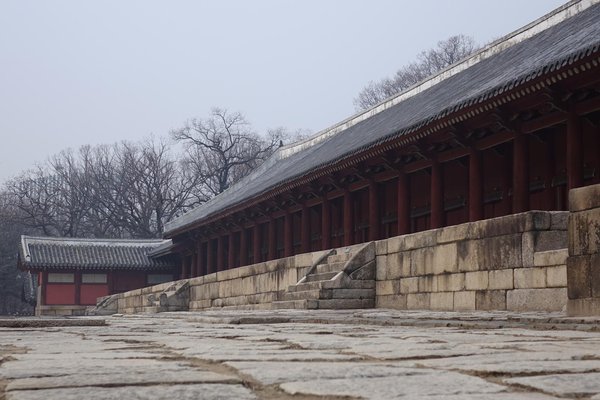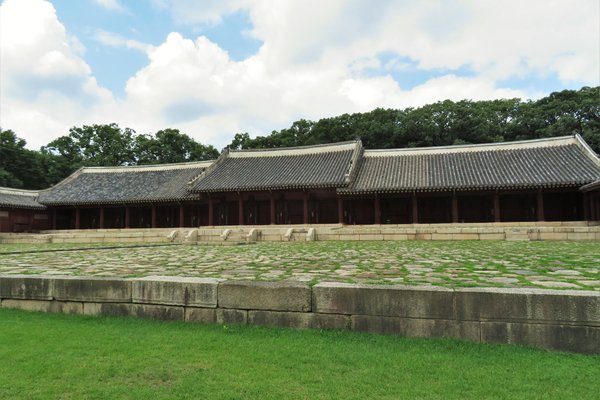Republic of Korea
Jongmyo Shrine
Jongmyo Shrine is the earliest surviving Confucian royal ancestral shrine.
The symbolic shrine, housing the original spirit tablets of the former kings and queens, was used for memorial services for the deceased members of the Joseon Dynasty. Ancestral worship rites are still carried out here. The complex was laid out according to traditional pungsu (geomantic) principles.
Community Perspective: a serene and austere site most of the year, but Frederik visited during the yearly Jongmyo Daeje ritual and found a chaotic spectacle. Solivagant suggests a visit to the “National Palace Museum of Korea” to get a better understanding of the site. Be aware that only on weekends you can visit without a guide and that the site is closed on Tuesdays, and opens on Mondays when many of Seoul’s other attractions close.
Site Info
Official Information
- Full Name
- Jongmyo Shrine (ID: 738)
- Country
- Republic of Korea
- Status
-
Inscribed 1995
Site history
History of Jongmyo Shrine
- 1995: Inscribed
- Inscribed
- Type
- Cultural
- Criteria
- iv
Links
- UNESCO
- whc.unesco.org
- Related
-
- english.cha.go.kr — Cultural Heritage Administration
All Links
UNESCO.org
- whc.unesco.org — whc.unesco.org/
Related Resources
- english.cha.go.kr — Cultural Heritage Administration
News Article
- Nov. 2, 2017 english.hani.co.kr — Jongmyo shrine documents registered with UNESCO’s Memory of the World
- Nov. 21, 2009 koreatimes.co.kr — The plan to build a skyscraper in front of Jongmyo was this week derailed after the latest intervention of the Cultural Heritage Administration
- Sept. 21, 2009 koreatimes.co.kr — Seoul Not Giving Up on Skyscraper Plan near Jongmyo
Community Information
- Community Category
- Religious structure: Indigenous
Travel Information
WHS Commandments Stars
All 10 criteria, plus individual paper ticket includes the name, date, price, and UNESCO …
Seoul hotspot
Recent Connections
-
WHS Commandments Stars
All 10 criteria, plus individual paper …
-
Seoul hotspot
located in the heart of Seoul -
Built in the 14th century
1394 originally, rebuilt in 1601, but i…
Connections of Jongmyo Shrine
- Individual People
-
-
Toyotomi Hideyoshi
Changdeokgung Palace and Jongmyo Shrine were both razed during Hideyoshi's disastarous campaign to conquer Korea and China in the late 16th century. Both sites were rebuilt following the end of the Imjin War.
-
- Geography
-
-
Located in a Capital City
Seoul (Capital of South Korea) -
Contiguous National Sites
Changdeokgung Palace Complex & Jongmyo Shrine
-
- Trivia
-
-
WHS within walking distance
Seoul -
Dubbed as another WHS
"Chongmyo's outstanding architectural value has led many scholars to call it the "Parthenon of Asia." - AB Document
-
- History
- Architecture
-
-
Geomancy
"Jongmyo and its grounds occupy a 19.4 ha oval site. The buildings are set in valleys and surrounded by low hills, with artificial additions built to reinforce the site’s balance of natural elements, in accordance with traditional pungsu principles. " (UNESCO) -
Wooden architecture
-
- Damaged
-
-
Destroyed during invasion
By Japanese Invasion in 1592 -
'Threatened' by Skyscrapers
??/122mtr/36 floors/Approved by city authorities/??
-
- World Heritage Process
-
-
Perfect Inscriptions
1995 -
Inscribed on a single criterion only
iv. to be an outstanding example of a type of building, architectural or technological ensemble or landscape which illustrates (a) significant stage(s) in human history
-
- Religion and Belief
-
-
Confucianism
the Confucianism Royal Shrine -
Ancestor Worship
Criteria iv: Jongmyo Shrine is an outstanding example of the Confucian royal ancestral shrine, which has survived relatively intact since the 16th century, the importance of which is enhanced by the persistence there of an important element of the intangible cultural heritage in the form of traditional ritual practices and forms. - UNESCO Description
-
- WHS on Other Lists
-
-
UNESCO Intangible Cultural Heritage Lists
The Royal Ancestral Ritual in the Jongmyo Shrine and its Music -
Memory of the World
Jongmyo shrine documents (2017)
-
- Timeline
-
-
Built in the 14th century
1394 originally, rebuilt in 1601, but its traditions and tablets have survived from the earlier date
-
- WHS Hotspots
-
-
Seoul hotspot
located in the heart of Seoul
-
- Visiting conditions
-
-
WHS Commandments Stars
All 10 criteria, plus individual paper ticket includes the name, date, price, and UNESCO symbol
-
News
- english.hani.co.kr 11/02/2017
- Jongmyo shrine documents registere…
- koreatimes.co.kr 11/21/2009
- The plan to build a skyscraper in …
- koreatimes.co.kr 09/21/2009
- Seoul Not Giving Up on Skyscraper …
Recent Visitors
Visitors of Jongmyo Shrine
- AC
- Alberto Rodriguez Gutierrez
- Alejandro Lau
- Alexander Barabanov
- Alexander Lehmann
- Alexander Parsons
- Alex Goh
- Alex Marcean
- AlexSchedel
- Angela Vandyck
- anthonybonbon
- Artur Anuszewski
- Atila Ege
- Badwater
- Bernard Joseph Esposo Guerrero
- Bigboss99
- Bill Maurmann
- Boj
- bossc
- Bram de Bruin
- Brendan Carroll
- c82wc1
- campmany
- Can SARICA
- Carlo Medina
- Carlo Sarion
- Carrascu
- Casey
- Chalamphol Therakul
- Chantal den Haan
- chenboada
- Cheryl
- Christoph
- Christravelblog
- Chunsian01
- ClaraHH
- Clyde
- Colossus
- Corinne Vail
- Csaba Nováczky
- CugelVance
- cutecid
- Daniel Chazad
- Danieljbromberg
- Dimitar Krastev
- DL
- Dorejd
- DouglasR
- Dr. Caligari
- DutchHorn
- Dwight Zehuan Xiao
- Elaine McArdle
- Elisabeth Fransisca Situmorang
- Els Slots
- Erik Jelinek
- Errol Neo
- Eva Kisgyorgy
- Fan Yibo
- Feldhase
- Felicité
- Frederik Dawson
- FS
- GabLabCebu
- Garrett
- Gary Arndt
- GeorgeIng61
- Hadrianus
- Harald T.
- Harry Mitsidis
- Hdwilsonau
- henrik_hannfors
- henryjiao18
- hotpickle
- Iain Jackson
- Ian Cade
- inomusay
- Jacob Choi
- Janos
- Jan Zimmermann
- Jarek Pokrzywnicki
- Javier
- Jawnbeary
- jballard650
- Jeanne OGrady
- Jeffrey Chai
- J_neveryes
- João Aender
- JobStopar
- Joel on the Road
- John Smaranda
- Jonas Kremer
- Jon Eshuijs
- Jonoprout
- Joyce van Soest
- Kasper
- Kayimi
- Ken DJ
- Kevin Padley-Knight
- kiank37
- Kim, Soo-youn
- KngAlaric
- Krijn
- Kristin
- Kyle Magnuson
- Leonie Geurts
- Liamps91
- lichia
- Little Lauren Travels
- Loic Pedras
- Luboang
- Lucio
- Ludvan
- Luis Filipe Gaspar
- Lukasz Palczewski
- Luke LOU
- Maciej Gil
- Malgorzata Kopczynska
- Mariam
- Martin
- Matthewrw
- Matthewsharris
- MaYumin
- Mia esguerra
- Michael Ayers
- Michael Novins
- Michael Turtle
- Mihai Dascalu
- Mikan22
- Mikko
- Miloš Tašković
- Nafis N
- Naim Y
- nan
- NH1984
- Niall Sclater
- Nihal Ege
- Olli-Pekka Turunen
- Patrik
- Paul Schofield
- PeterH
- Peter Lööv
- Petteri
- Philipp Leu
- Philipp Peterer
- phillipmeng
- Piotr Wasil
- Pradip Tripathy
- puessergio
- Ralf Regele
- ReallyDeepThoughts
- Reza
- Rob Wilson
- Roman Bruehwiler
- S. Anril Tiatco
- Sclowitz
- Sergio Arjona
- Shandos Cleaver
- Shijie ZHU
- sibariam
- Simonh
- Slavi
- SnakeGreen
- Solivagant
- Stan
- Stanislaw Warwas
- Stijn
- SymonMajewski
- Szucs Tamas
- Tamara Ratz
- Taotao Chen
- Thomas Buechler
- Thomas van der Walt
- Thorben
- Timothy C Easton
- tingmelvin
- tony0001
- trekkie900
- trish91198
- Tsunami
- Vernon Prieto
- Vincent Cheung
- VMThumper
- Walter
- Westwards
- Xiong Wei
- Xiquinho Silva
- Yi Han Goh
- Yongcheng Liu
- Zach
- zfish
- Zoë Sheng
- Zos M
- ZZSong
Community Reviews
Show full reviews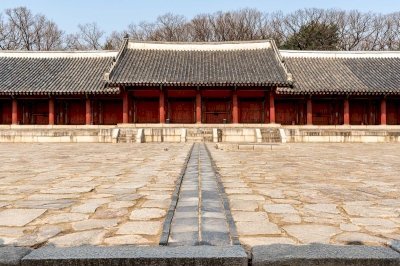
On first glance, it may appear like there's not much to see at Jongmyo Shrine. Its main raison d'être is to hold the spirit tablets of the Joseon kings and queens - but these are all hidden away in spirit chambers in the main buildings where no tourists will ever see them. On top of that, the architecture is much more muted than the nearby royal palaces, so it's less of a spectacle. And, at the time of my visit, the main hall (Jeongjeon) was covered by hoardings while it undergoes a five-year renovation (due to finish in 2025).
However, as I learned more about the story of the shrine, I gained a new appreciation for its heritage and how it plays a part in Korean culture. As the guide described it, Jongmyo Shrine is "a symbol of the Korean people’s thought". The Confucian principles at the shrine's core are quite interesting and seeing a place where they are put into action is part of exploring the country's guiding philosophy.
There's also something quite beautiful about the architecture once you accept that is is deliberately less flashy, presenting a more respectful design for a place that honours the dead. The landscaping of the parklands in the shrine creates a tranquil setting away from the bustle of the city.
If you visit on a weekend, you can wander around at your own pace. On a weekday, you need to take a tour, which lasts for about an hour …
Keep reading 0 comments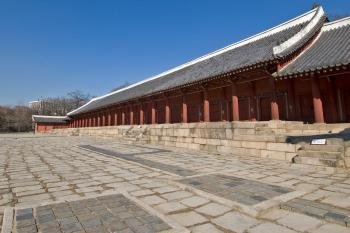
I visited here in late 2007.
The Jongmyo Shrine grounds is literally across the street from the Changdeok Palace compound. Like the Changdeok Palace, it suffers from a lack of fixtures and artifacts. Unlike the Changdeok Palace, you can enter the grounds with a ticket and stroll around the facilities to your heart’s content as a guide is not required.
Read more about the Jongmyo Shrine on my website.
Keep reading 0 comments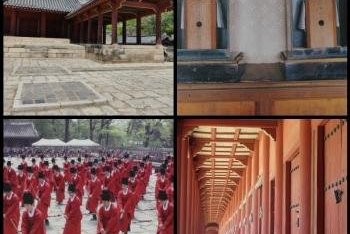
I visited this WHS in May 2017 using the combination ticket to 4 Palaces and this shrine. Unlike most sites in South Korea, it is closed on Tuesdays. Having done some reading prior to visiting the site and also by attentively reading the superb information boards on site, I opted to visit on a Saturday to be able to visit at leisure. Even though I visited the site when it's truly active with the Royal Culture Festival taking place during the first week of May, the crowds were not that huge and the nighttime performance (entrance with prior registration) with royal ancestral ritual music was a truly unexpected highlight.
Jongmyo Shrine is the supreme shrine of the state where the tablets of royal ancestors (top right photo) are enshrined and memorial services are performed for deceased kings and queens. The construction of Jongmyo predates that of the main palace of Seoul, Gyeongbokgung. According to Confucian philosophy and the concepts of geomancy, it was built on the east side of the royal palace, while the Sajik Shrine, where ritual services for the gods of earth and crops were performed, was built on the west side.
Several kings and queens were enshrined with the passage of time, making it necessary to expand to what we see today. When a king or queen died, mourning at the palace would continue for 3 whole years! After that period of mourning, memorial tablets of the deceased were moved to Jongmyo and enshrined in Jeongjeon (top …
Keep reading 0 comments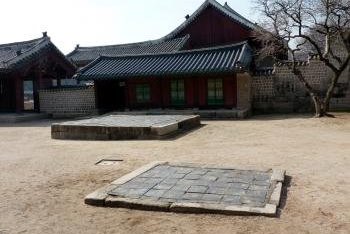
The 7 reviews to date of the Jongmyo Shrine are fairly “mixed” in terms of the degree of “value” which people felt they had obtained from their visit. One issue seems to be how best to “understand” and appreciate the site. We visited on a Saturday – the only day when visitors are allowed to wonder around unguided. It is perhaps worth highlighting here that Jongmyo has Tuesday as its closing day and is therefore a useful site for visiting on Mondays when the other WHS in/around Seoul are closed (The National and Palace Museums are also open then). Others have praised the guided aspect, though I must say that we found our guided tour of the Huwon at Changdeokgung something of a disappointment - too many people and not enough “meat” in the explanations (not unreasonable given the range of visitors and their interests - or lack thereof!), too long in some places and not enough in others, no ability to go back and re-look etc etc – we are not good “tour group” material! Whether we “missed out” regarding a Jongmyo tour we will, of course, never know (though I note that there are 2 different tour routes according to whether there are over or under 200 people! We only had 100 for the Huwon tour.)
In fact Jongmyo contains a full range of the usual bilingual metal signs we grew to know and love around Korea and they are excellently detailed (Nowadays I always photo such signs …
Keep reading 0 comments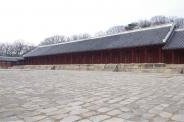
Jongmyo Shrine is a Confucian sanctuary dedicated to the Joseon dynasty dead members. It was built in 1394 by king Taejo and is then thought to be the oldest Confucian sanctuary. It was destroyed by the Japanese and rebuilt in 1601. This one is still in place. It used to welcome some of the Tripitaka Koreana, wooden tablets that are now within the Haiensa temple, as well registered as WHS.
The main distinctive element is the great square in front of the building, 150 meters long and 100 meters width. The complex is still used today for ritual ceremonies.
This site is really intersting for its architecture and its symbolism. Located in the center of Seoul, you can easily get there by subway, the syop is Jongno 3 ga on the line 1.
Keep reading 0 comments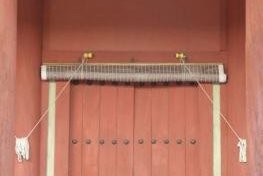
From reading the other reviews it seems there is a bit of a split in people’s views of this shrine. I will say I am in the baffled camp. It is a pretty austere site to get a grip on.
Essentially it is a walled park with two large rectangular courtyards lined with bulky wooden buildings fronted with closed doors on one side. It isn’t really an easily accessible site, which is why I was glad to see that access to this site is now by guided tour only (about every 2 hours in English). I think this is actually good as the guide was able to try and make some sense of the Confucian concepts behind the function of the shrine. That being said; I don’t think I have ever seen people look as bored as many did on my tour. It wasn’t the fault of the guide who did a sterling job considering how alien the concepts can be to many westerners.
I was sort of looking forward to seeing the architecture of the site. I am a big fan of the modern architect Mies van der Rohe who is famous for stating “Less is more”; as such I have a fairly high tolerance for buildings that others may see as monotonous, but however hard I tried I still didn’t get much from the structures, and perhaps that would be missing the point anyway.
The site does tie in well with Seoul’s other World Heritage Sites as they …
Keep reading 0 comments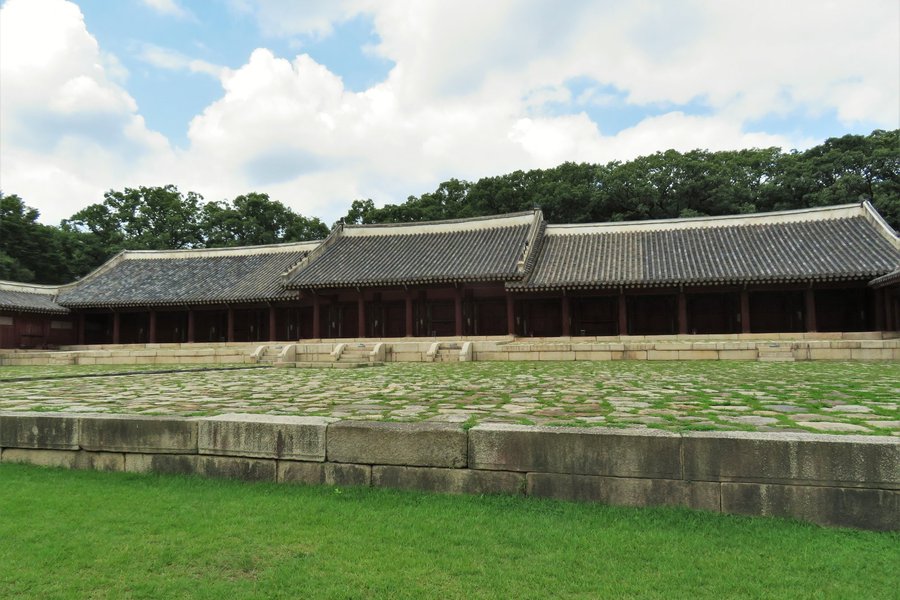
What makes Jongmyo Shrine special is it's unique architecture and peacefulness. The site is a splendid place to take a walk, or as a quite spot for reflection. This site will not amaze you, but be patient and relax and you can certainly appreciate this beautiful shrine. For travelers in Seoul on a Monday, keep in mind most of the cities cultural sites are closed, however Jongmyo is open!
I revisited Jongmyo over the years to improve my pictures and better appreciate this quite WHS. Each time I was rewarded with a serene environment and lush green landscapes in the center of Seoul. Work has been completed to reconnect Jongmyo Shrine with Changdeokgung Palace. I hope visitors can eventually use this route to freely go between the royal complex.
I would favor Jongmyo to be paired with Changdeokgung as one WHS, but early nominations tended to be singular monuments. The entrance to Jongmyo has been transformed over the past decade or so as the Eodo (king’s path) has been restored. While just outside the inscribed area, this now acts as the de facto buffer zone.
Lastly, its worth noting this is not the only shrine in Seoul. There is also Munmyo and Dongmyo.
Keep reading 0 comments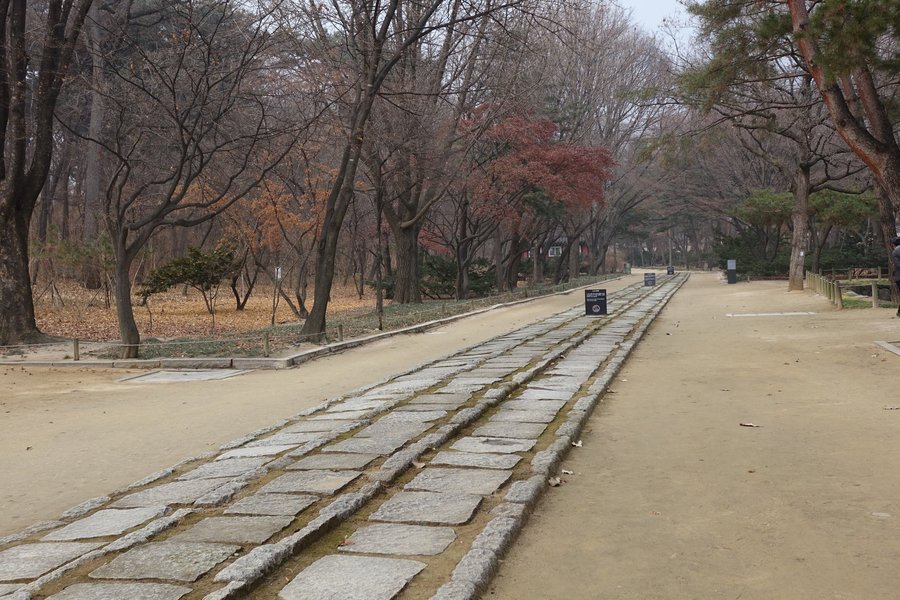
Unlike the other posters, I don't think this place is boring at all! I really like it, and is one of my favourite places in Seoul. It is beautifully serene and peaceful (most of the time). It is also only about $1 to get it, making it one of the cheaper WHSs that I've been to. Korea has a commendable policy on entry fees.
Keep reading 0 comments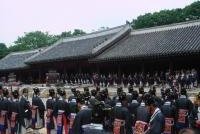
The royal ancestral shrine of Jongmyo is a simple but serene wooden complex housing spirit tablets of kings and queens of Joseon dynasty who ruled Korea for more than 500 years in the city center of Seoul. The complex is quite unique in East Asia where normally the spirit tablets are kept in a small shrine in the house or palace in case of royalties, but Jongmyo was built apart from the palace which makes it different from other royal Confucius shrines in China. However, Jongmyo is not an active shrine and most of the times are closed making it just big boring buildings in the forest-liked park with few visitors, a really contrast to lively Japanese royal shrines in Tokyo or Kyoto.
The royal ceremony in Jongmyo called Jongmyo Daeje, a performance of ritual, music and dance, is considered the only existing royal Confucius ceremony that still practicing in modern time recognized by UNESCO as world intangible cultural asset, so Jongmyo is few places on earth holding two statuses from UNESCO world heritage program.
In 2008, I chose to visit Jongmyo on the first Sunday of May, the only time of the year when Jongmyo is backed to its glory by the performance of Jongmyo Daeje. The whole park is really crowded with thousands of spectators and lots of people dressed in ancient Korean ceremonial robes, a real feast of sight. I decided to see the morning ceremony at Yeongnyeongjeon Shrine since it was impossible to …
Keep reading 0 comments
Jongmyo Shrine is nothing to see. It likes an elders' garden. The worth thing and the most important thing is annual holy services for the Kings and Queens at the fist Saturday in May. It keeps the traditional dances and musical for over several hundred years
Keep reading 0 comments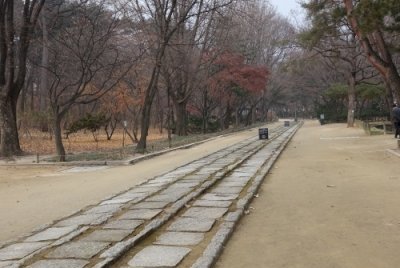
This is sober stuff. I don't know if you can say that you like it or not - it's meant as a shrine. Although I did some homework I didn't really get a grip on this monument during my first visit in 2001.
The shrine nowadays can only be visited with a guide (except on Saturdays, when you can walk around on your own freely). Four times a day there is a guided tour in English. I bought a ticket for the tour at 4 p.m., a tour that still attracted 25-30 people.
In this shrine are kept the so-called memorial tablets for the kings and queens of the last dynasty of Korea. Their bodies are buried elsewhere. Twice a year, these ancestors are honored by a big ritual of song, dance and music in the Confucian tradition. The rest of the year the complex is peaceful and quiet. The tablets are kept behind closed doors. You have to watch your step walking here: the spirits have their own path that leads directly to the shrine.
The tablets of the most important kings are located in the main building on the site: an elongated building with 35 rooms on a vast square. Next to it is a similar building for the less important ancestors. In the freezing cold of early January, it is all very austere, but I'm glad I went for a second time to hear more of the explanations from the guide.
Keep reading 0 comments
